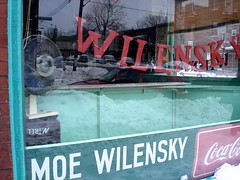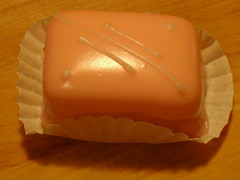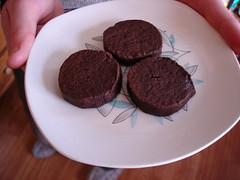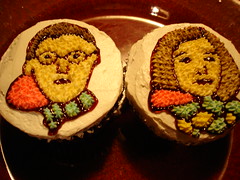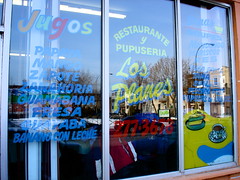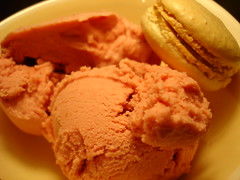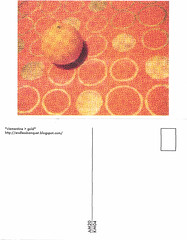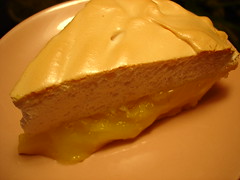Michelle's two batches of marmalade might have been the highlights of Citrus Week 2005, but the festivities actually got going earlier in the week. First came a delightful Tangerine Pound Cake, and two days later Michelle made her first Key Lime Pie. Actually, Michelle had never even tasted Key Lime Pie until she tried a bite of her own. I, on the other hand, having spent a great deal of time in South Florida over the years, have had my fair share, but Key Lime Pie is among my favorite desserts. It had been a long time since I'd had one with a meringue gracing it, like this one. All in all, the whole thing was a winner. Not only was the meringue on this particular pie beautiful, it was also terribly delicious, and the filling had a great deal more zest than is typical. It had a burst of lime to it that was more than welcome on a cold February night with a cup of tea.
I'll let Michelle give you the details on both of these...
aj
I think we have a sugar problem. The tangerine pound cake was born late one night as we settled in to watch a movie (Vivre Sa Vie, I think it was). We looked at one another and both asked, "Do we really have no dessert tonight?" I didn't need any more encouragement than that and ran into the kitchen to whip up a simple pound cake with tangerine zest. Halfway through the film the timer went off, and fifteen minutes later we were enjoying the first bites. Pound cake keeps so well that our appetites were satiated for a few days, until we ran out and I made...
Key Lime Meringue Pie
Crust:
2 c. flour
1/2 tsp. salt
1/2 c. shortening
1/4 lb. butter, cut into 1/2 " cubes
7 Tbsp. ice water
Custard:
3/4 c. sugar
1/3 c. cornstarch
1/8 tsp. salt
1 1 /2 c. water
1 Tbsp. grated Key lime zest
2/3 c. Key lime juice (from about 10 limes)
4 egg yolks
2 Tbsp. butter
Meringue:
4 egg whites
1/4 tsp. cream of tartar
1/2 c. sugar
1 pinch salt
1/2 tsp. vanilla
For the crust: Mix flour and salt in a large bowl. Work in the shortening until it has been cut into 1/3 " pieces. Add the butter and work it in until it is in pea-size pieces. Sprinkle the water over the mixture and work just to combine. Divide in two and wrap in plastic and chill at least 30 min. (You will only need one of these for this recipe. You can freeze the other one for later use.) Roll one piece of dough out gently and place in a pie plate. Let rest another 30 min. in the fridge. Prick surface of crust with a fork, or weigh down with pie weights. Bake at 350*F until golden. Remove from oven and let cool.
For the custard: In a saucepan, whisk together the sugar, cornstarch, and salt. Whisk in the lime juice, water and zest. Whisk in the yolks and butter. Cook over low heat stirring constantly. Once it begins to thicken, cook another minute more, then strain into the cooled pie shell. Spread evenly.
For the meringue: Beat the egg whites with the cream of tartar until they form soft peaks. Whisk in the sugar and beat until glossy and firm. Stir in the salt and vanilla. Gently spread over the custard, making sure that the edge between the pastry and custard is sealed completely. Bake for 25 min. at 325*F, until meringue is golden brown. Let cool 30 min. before serving.
m
[This recipe comes from Alice Waters' Chez Panisse Fruit cookbook.]
